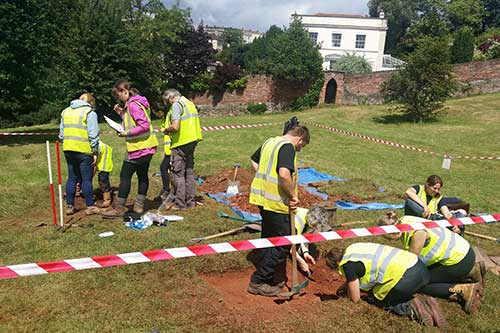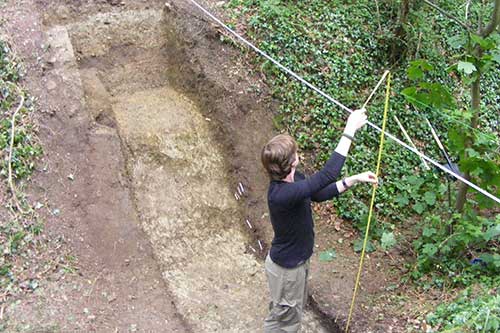Staff and students from the Department of Archaeology and Anthropology conducted excavations in Hog Wood, just north of Hinton Charterhouse near Bath, where remains of a 'Stop Line' built in 1940 to protect Bristol from German invasion can still be seen. The aim of the excavation was to analyse a near-complete defensive site comprising pillboxes, anti-tank ditches and slit trenches.
The University had exclusive access to the site, which has been described as the best example of its kind to be found anywhere in the UK.
Dr Philip Rowe, who led the dig under the academic supervision of Professor Nicholas Saunders, said: “Research into this remarkable site is of primary importance and helps us understand more about an artefact of the contemporary past that has been all but forgotten. We were surprised to discover how sterile the site was, with no evidence of occupation. Generally, soldiers leave some traces of their presence, such as graffiti, but we found nothing of the kind suggesting that the line was never actually manned once it had been dug.”
The archaeologists then travelled back in time a further 25 years to the First World War, investigating the practice trenches dug on Brandon Hill by Bristol troops from the Gloucestershire Regiment prior to their departure for France in November 1915.
The troops were based in White City (Ashton Gate) while training and a contemporary photograph, published in the Bristol Times and Mirror, and found by Dr Rowe in the Bristol Record Office, indicated they practised digging trenches on part of Brandon Hill below Cabot Tower. Bristol City Council granted Dr Rowe permission to excavate the site in order to find out more about this little-known aspect of the city’s history.
He said: “The excavation of these trenches not only helps us understand more about the soldiers’ training techniques, but, more importantly, it gives us a direct physical link to the lost generation of Bristol men who fought and died during the First World War. Indeed artefacts recovered during a week of test pits provided evidence of the multi-period use of Brandon Hill, from the English Civil War to modern day, with evidence of artificial features indicative of infilled defensive fieldworks evident in the archaeological record.”
Professor Saunders said: “Dr Rowe’s investigations into Bristol and Bath’s First and Second World War heritage are both timely and important. This work brings the past to life and shows how all around us are traces of dangerous times at the very edge of living memory. I wholeheartedly congratulate all who are involved with these two projects.”

